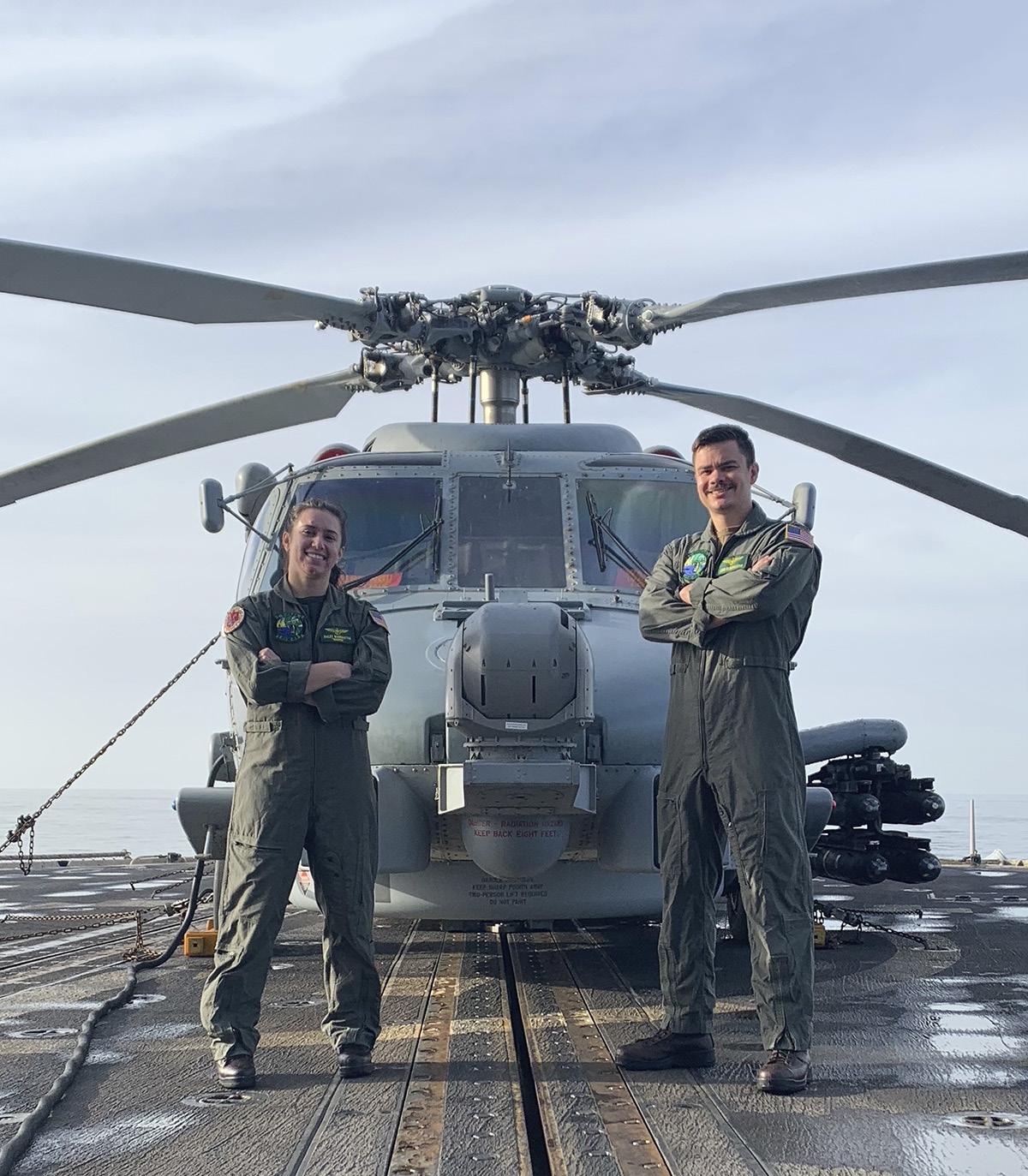Focus - UAVs and You Rockets and Rotors
By LT Thomas “Cosmo” Sandford, USN
I
f it weren’t for the chirps of frogs from the ponds and swampgrass surrounding the Mid-Atlantic Regional Spaceport's Unmanned Aircraft Systems (MARS UAS) Airfield on any given evening, one could hear a pin drop on the runway. The secluded airfield, nestled within the confines of Virginia’s NASA Wallops Flight Facility, occupies a narrow stretch of improved swampland just big enough for a runway. The silence is only occasionally punctuated with the sound of rocket launches, and more recently, the hum of unmanned drones. While industry professionals know Fire Scout Hovering w 60s Wallops Photo: Two HSC-22 MH-60S and an MQNASA Wallops Flight Facility as a 8B Fire Scout aircraft hover above MARS UAS Airfield prior to departure. NASA flexible, cost-effective launch location Courtesy Photo) for government and commercial earth and space-bound maintenance with a day-to-day flight schedule, and gives applications, the tenant MARS UAS Airfield within it serves them the opportunity to execute flight-related maintenance a new need: providing warfighters with a superior site to hone on the Fire Scout, since all we’re able to do at our home base their skills while operating unmanned aerial vehicles (UAVs). is ground turns.” One of those warfighters includes Helicopter Sea Combat Squadron 22 (HSC-22), the first East-Coast-based Navy squadron to deploy operationally with the MQ-8 Fire Scout Unmanned Aerial System. In addition to operating the manned MH-60S Knighthawk helicopter, the Norfolk, Virginia-based squadron also operates two variants of the MQ-8 Fire Scout UAS, and uses MARS Airfield to gain proficiency flying drones prior to deployment.
Fire Scout operations require dedicated and uncongested airspace not available at the Squadron’s home base at Chambers Field in Norfolk, Virginia, about two hours south of the MARS UAS Airfield. The vast network of restricted airspace above NASA Wallops Flight Facility provides plenty of uncrowded airspace, making it the perfect area for HSC-22 aircrews to put the Fire Scout through its paces in ways the home based simulators cannot.
“Flying at MARS UAS Airfield gives us a good opportunity to fly the Fire Scout live and work out the procedures we can’t train to in the simulator,” says LCDR Richard Mehlmann, HSC-22 Operations Officer and former HSC-22 Detachment 7 Officer-in-Charge.
“It’s the first time you can really work through the grooming process of the Mission Control Station (MCS), learn how to communicate with the GMVO, and is typically the first time you’re able to use the RADAR and the Fire Scout’s communications relay feature,” Mehlmann says. “For example, we were flying the Fire Scout over Wallops for a Combat Search and Rescue event, and we were able to relay communications via the MCS to Accomack Airfield.”
The Fire Scout requires three Sailors to operate, including an enlisted Ground Maintenance Vehicle Operator (GMVO) who interacts physically with the Fire Scout while on the ground, a commissioned Air Vehicle Operator (AVO) who commands it to launch, land, and controls its flight path, and an enlisted Mission Payload Operator (MPO) who controls the BRITE STAR Block II MTS camera system or ZPY-4 / ZPY-8 surface-search radar. “Flying there starts to build the crew resource management (CRM) process between the AVO, MPO, and GMVO,” Mehlmann says. “It also gives our maintenance department a feel for how to balance MH-60S maintenance with Fire Scout
Rotor Review #153 Summer '21
But where the Fire Scout really shines is in its ability to provide real-time intelligence, surveillance, and reconnaissance (ISR) via its BRITE STAR Block II Multispectral Targeting System and radar, which can pipe video and radar contacts directly back into the shipboard display systems aboard the Littoral Combat Ships HSC-22 deploys in conjunction with, a feature the manned MH-60S doesn’t have, Mehlmann says. On a past training detachment to MARS UAS Airfield, the squadron flew the Fire Scout for ISR coverage concurrently with a dual-ship MH-60S direct action flight event involving about 30 opposing forces. The Fire Scout was able to get 42









































